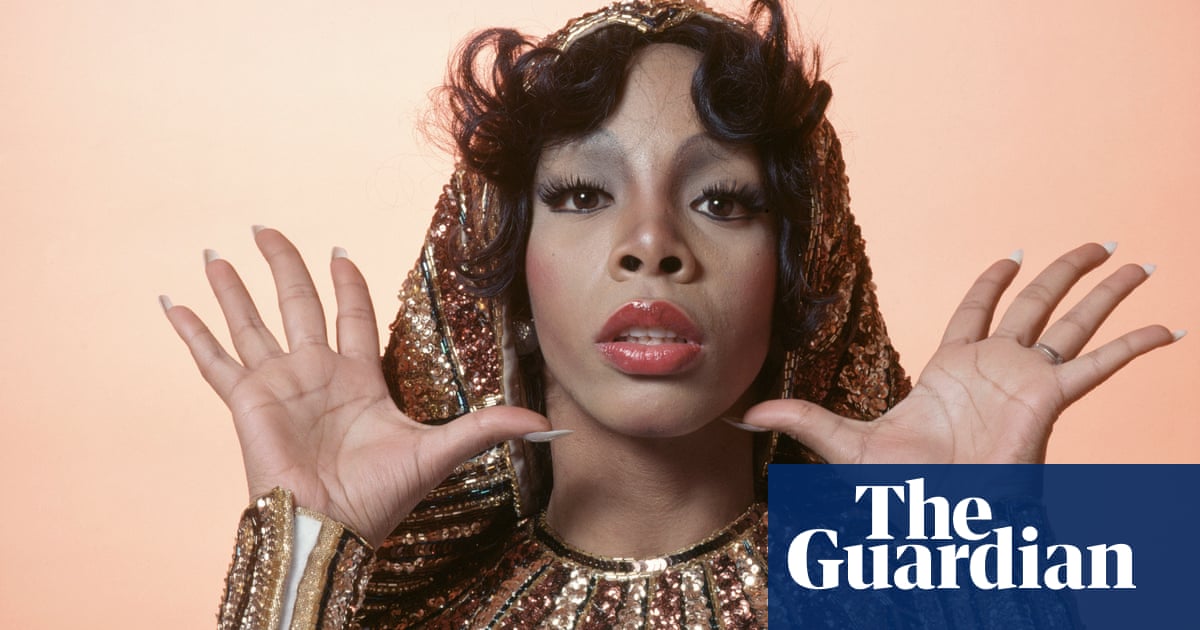
mounted moose’s head looms over Derren Brown’s right shoulder. A black crayfish – “exploded” and expanded for display, its pincers reaching toward the ceiling – sits in the cabinet to his left, flanked by other unrecognisable curios. “I acquire a lot of shit, as you can probably tell,” says Brown over Zoom. His comfortable red fleece, draped over a blue shirt, is at odds with the macabre surroundings. He claims to have acquired more than 200 pieces of ethically sourced taxidermy, displayed throughout his home. The only way he can dust the moose’s head is to blow it with his cordless leaf blower. “Is that weird?” he asks.
“I like things that look real and aren’t. I quite like painting. I like my taxidermy. I like magic,” says the psychological illusionist (his term), mentalist, conjuror, writer, painter, photographer and performer. Even explaining the grim process of taxidermy, he manages to be charming and approachable – and to use the same, assured rationality with which he analyses his tricks.
“They’re not dead animals; they’re statues, really, because it’s an artificial body that has the skin stretched over it. So, as long as that skin is from something that’s passed away naturally, then to me that’s fine. But yeah, it is creepy,” he admits. “It’s a great barrier against any unwanted sexual attention.”
In recent years Brown has striven to reinvent himself as a philosopher. Gone are the TV shows filled with street magic performed by a goateed, horn-haired Brown. In their place are grand, Truman Show-style events, whose subjects learn valuable life lessons while Brown draws conclusions about human behaviour.
His writing, too, has moved away from the minutiae of conjuring to focus on the mind: specifically, what makes us happy. His 2017 book, Happy: Why More or Less Everything Is Absolutely Fine, was an extraordinarily deep dive into the subject. In it, he offered a sharp rebuke to the platitudes, limitations and flawed thinking of the self-help industry, drawing on philosophy and psychology.
His new book, A Little Happier, is a condensed, more digestible take, filled with accessible advice largely drawn from stoicism, the Hellenistic philosophy of the third century BC. Throughout the book Brown advocates for a happiness born out of serenity. Make peace with how things are, he says: it is our reaction to events that causes distress, not the events themselves. And resist the hedonic treadmill of our consumerist culture.
“The world we live in is making constant claims on our attention,” he says. “It’s more important than ever to recognise what does actually make us happy, what doesn’t and what that even means. We talk about happiness like it’s just an easy thing, and it isn’t. The rainbow is a good image for happiness, because as you get closer to a rainbow it just recedes. It’s a mirage.”
This approach, Brown believes, has helped him navigate the pandemic. “The stoic model offers a certain amount of resilience in the face of stuff you can’t control,” he says. “There’s something in getting on with your own stuff, not rising to too much panic and anxiety about what’s going on with the rest of the world.”
A self-proclaimed introvert, he wasn’t too fazed by the lockdown. “I liked the fact that I wasn’t going to have my time taken up with TV and things I’d generally rather not be doing. I still am quite enjoying the isolation aspect of it. I’ve become quite antisocial and it’s slightly crossed the line from enjoying getting on with my own thing to not wanting to see people.”
Instead, he has busied himself with writing, and painting celebrity caricatures. David Attenborough sits on the easel in his studio; on the floor are Benedict Cumberbatch and Willem Dafoe, looking somehow even more menacing than usual. His prints sell for up to £200 and originals go for £15,000 (Matt Lucas has reserved the portrait of Freddie Mercury), and Brown is keen for this to become more than a hobby. “Professionally, I probably haven’t been happier for a while,” he says. “It’s been amazing.”
His eye for a caricature started at school. Born in 1971 and raised in Croydon, Brown was privately educated at the school where his father was a swimming coach. He didn’t inherit his father’s athleticism and was “just generally not a cool kid”. Although he says he wasn’t bullied, he was in “the wrong crowd” (the classical-music-loving kids) and was picked on a little. When he moved to a sixth-form college, he was ready for that to change. “I started doing caricatures and impersonations of the teachers,” he says. “By the time I went into university, I was a terrible attention-seeker.”
At Bristol, where he studied law and German, he went to a hypnosis show and knew immediately that this was what he wanted to do.
“A lot of the people who would come up on stage and take part in the show were exactly the types that would have intimidated me before,” says Brown. “Magic totally controls the scene and controls the interaction. If you lean into it in your normal life, you create a slightly untouchable persona. It tickled a part of me that I hadn’t realised needed tickling.” So he taught himself the craft from books, put on shows at student venues and did closeup magic at restaurant tables around Bristol.
It was at university that he also resolved the conflict between his sexuality and his faith. He had stumbled into religion as an infant. “I was sort of indoctrinated,” he says, “not in a cynical way, but when I was five or six I had a teacher at my school who ran the crusade classes, which were like Sunday school Bible-reading classes.” She asked if he wanted to join, which, as he was fond of her, he did. “By the time I was old enough to realise I’d now got a religious belief it was a bit too late to just discard it. It had worked its way in.”
By the time Brown reached university he was an evangelical Christian. Eventually he came out as gay to a close friend, also a Christian, who had become involved with an organisation offering gay-conversion therapy.
“I tagged along to this conference – a weekend thing – and I read a couple of the books, so I became familiar with that world,” says Brown. “I didn’t know whether [being gay] was going to pass. I didn’t quite know where I was with it. So given that he was saying: ‘There is a Christian approach that removes this awkward thing,’ it felt very tempting.
“As grossly misjudged as it is, and as dangerous as it can be, it was better than just being told: ‘Oh, you’re wrong, or you’re evil, or you should just read the Bible a lot more and it would go away.’ At least it was a misjudged attempt to actually address it as a psychological entity that could be approached – as something that was complex and subtle.”
The conference was dramatically ambushed by Outrage!, the LGBTQ+ activist organisation. “It was odd,” says Brown, “because I just remember thinking: ‘Oh God, you must be really angry; this must be really offensive to you.’ It just hadn’t occurred to me that there was anything remotely negative, or upsetting or wrong at all. It just seemed like the church was trying to engage a bit more.”
He eventually accepted his sexuality after realising that most people simply didn’t care about it. “You get caught up in the story that you have this shameful aspect that has to be hidden from people. But then what’s truly liberating about coming out is that it’s not interesting to people. And if people don’t care about that, then they also don’t care about the hundred other smaller things in my life that bother me.”
If Brown’s faith was tested by his sexuality, then it was put under further strain by his passion for magic and hypnosis, which upset many of his friends in the university’s Christian society, presumably because of the craft’s associations with the occult. It threw him: he had not thought about magic or hypnosis in religious terms. To him, it was only natural to be interested in what he saw as the pinnacle of God’s creation: the human mind. “Why would that be offensive?” he says “That’s just fear, isn’t it?”
He finally gave up on Christianity after reading Richard Dawkins’s atheist polemic The God Delusion. But traces of his religious past still run through his performances: he has often impersonated a faith healer on stage, albeit to make the point that it is nonsense.
After university, Brown continued to pursue a career in magic and hypnosis and eventually attracted the attention of television producers. This year he celebrated 20 years since his TV debut with the Channel 4 show Mind Control, which saw him deploy psychology, subterfuge, subliminal messaging and sleight of hand to deceive, amaze, con, rob and beguile members of the public. Onscreen, he comes across as a mix of Sherlock Holmes, Willy Wonka and Hannibal Lecter (he has seen The Silence of the Lambs 16 times and finds the scene where Lecter convinces Miggs to swallow his own tongue particularly compelling).
Brown’s career is largely built on two skills: plucking an idea from the mind or planting one there. He relies largely on realistic environments for his stunts, and relishes explaining how he has pulled off his tricks. In the hands of a lesser performer such revelations could underwhelm, but Brown’s showmanship has always come from what he is saying, rather than what he is doing.
Now, he insists on performing tricks with a deeper meaning: a metaphor or message to highlight some awkward characteristic of the human mind or society, or both. It has helped him to avoid the flash-in-the-pan fate often reserved for more hokey magicians. His TV shows are now much less “Look at what I’m capable of!” (playing Russian roulette, predicting the lottery, leading the nation in a seance) and more “Look at what you’re capable of!” (landing a plane, taking a bullet for a stranger, murder).
In 2018’s The Push, he created an elaborate chain of events all geared towards encouraging an unknowing individual to commit “murder” by pushing a man off a building (the man is attached to a harness not visible to them). True to form, the show was an elaborate reimagining of the psychologist Stanley Milgram’s 1960s experiment to see how much pain people were willing to inflict on strangers, just because they were told to. In Brown’s show, three of the four contestants committed “murder”. Does he ever worry he has gone too far?
“I don’t think so,” he says. “I can only judge it by the experiences of the person going through it. And I only make one of these things a year, so we’re all involved in that person’s welfare and their experience.”
Does he enjoy the controversy that comes with some of his bigger stunts?
“I really try to avoid it. The plotlines that are grabby are hopefully backed by a kind of intelligent reason. I think that’s important. Because otherwise, it’s just a thin sensation for its own sake.”
He stopped doing street magic on TV “because that was starting to feel a bit childish”, although he still loves doing the stage shows. (The Showman, his latest one-man live show, was postponed a few days before it was due to open due to the pandemic, but is now scheduled to start in February 2021.) Could he see himself changing direction once more and focusing on his writing and painting?
“I think so, yeah,” he says. “The process of making TV, every aspect of it as I’m doing it, is always perfectly enjoyable, but there’s something about the prospect of it each time that makes me sick slightly inside.”
Brown turns 50 in February, but he has never been one to overthink, and certainly not dread, the decades ahead.
“If the first half of life is about ambition – which I’ve never really had, but staking your claim in the world at least – then the second half is serving the thing that’s bigger than you. In human terms, you’ve slayed the dragon and now you’re going to rescue the princess,” says Brown. “In the second half of life it’s important to find those things that are bigger than yourself. And when we lose ourselves in those things, that’s how we find meaning.”
A Little Happier is available from 15 October, published by Bantam Press.












